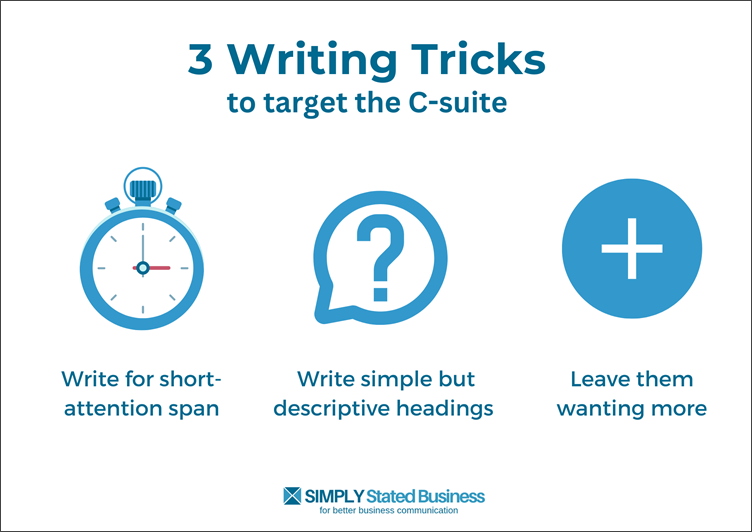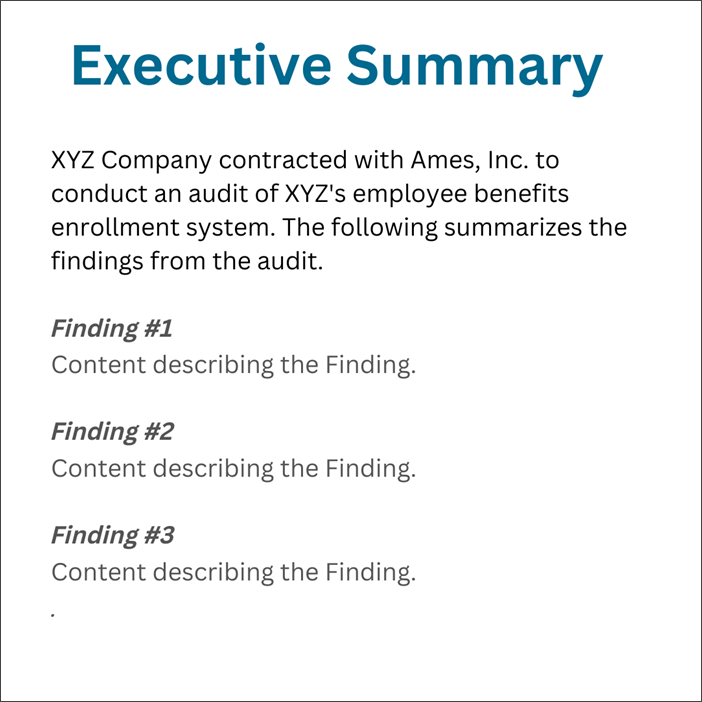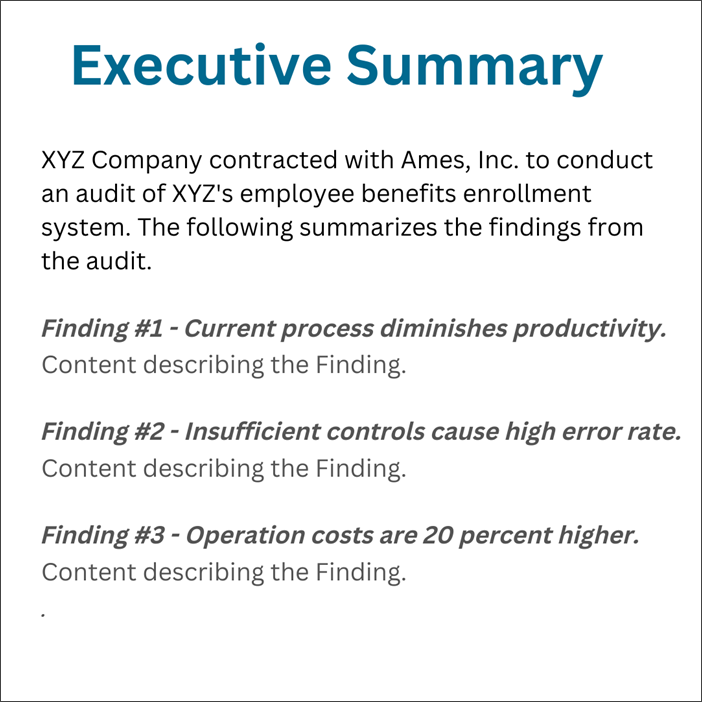
Ah, the C-Suite. The elusive target of so many marketing campaigns. Whether it’s Chief Executive Officers (CEOs) or some other C-title, grabbing their attention is rarely simple.
If the targeted executives scroll right by your communication, how will they know you have the perfect product?
Three simple writing tricks may help snag their attention.

1. Write for short-attention span.
Short-attention spans are not an exclusive trait of the C-suite. We all have watched our attention spans shrink. However, busy executives have little tolerance for volumes of details.
Keep that in mind and write for those short-attention spans.
- If you’re delivering a report, include an executive summary.
- Deliver your message at the start.
- Highlight key points.
- Finish strong with a clear conclusion.
Edit until you have a tightly wrapped message for busy executives.
2. Write simple, but descriptive headings.
Great headings promote online scanning that is meaningful. Because executives are master scanners, you need to get your best bang for your buck in your headings.
Example
A typical approach to Executive Summaries is a list of Findings. Picture yourself as that busy executive (although this trick works for all readers).
You’re scanning a report. One version shows the following.

Now, look at the second version.

Which version do you think will grab the attention of the C-suite?
- The first version forced the executive to read the content under the heading to determine the problem.
- The revised version captures the problem in the headings.
- Bonus Tip: Talk productivity, quality, and money (!) and you will definitely grab their attention.
The second version encourages more reading and attention to your message. Each heading is a reinforcement of your message.
Create attention-grabbing headings that support your message.
Another Example
If your message is buy our solution, your headings organize, identify and highlight the following content.
- What’s the problem?
- What’s the solution?
- What’s the next step?
Highlight your unique selling proposition (USP). If you think it’s tough standing out to online readers, try the executive crowd.
Sneak your USP into the heading (without sounding too salesy) – even if that’s simply using your product name in the heading.
(Note: We’ll use the same above example from Finding #1 but this would not be an Executive Summary from an audit – that would be too salesy.)
- Good heading – Most systems diminish productivity.
- Better heading – Patented XL7 delivers up to 50% higher productivity.
Ka-ching!
3. Leave them wanting more.
Delivering high quality content takes effort. Even if you use AI tools. Real success is when returning readers and customers cannot get enough of what you have to offer.
Getting your marketing in front of executives is the first step. Marketing that leaves the C-suite wanting more – priceless.
- Grab their attention.
- Prove you have answers to their problems.
- Inspire them to take action.
Time-Saving Tricks
For the C-suite, time is a precious commodity. Writing professionals understand that.
Use that shared ideal to improve your marketing to busy executives.
- Deliver a concise and complete message.
- Use headings that clarify your message.
- Create a Call to Action they want.
What writing tricks do you have up your sleeve?
Credit: Bigstock Photo
Credit: Canva
=====================
Helping you keep your business communication simple, clear & uniquely yours.
=====================
Note: This post originally posted on July 16, 2012. This August 22, 2023 version updates it.

Cathy, would you agree that these same principles apply to small business owners as well? In this digital age, I find that more people scan and less read in-depth. You have to “hook” them first, then you can reel them in. I have fishing on the brain. 🙂
Hi Wade: sure, I think these help with any-sized company; however, there will be times where you are targeting a “details” person. If you don’t deliver the details in that scenario, you could very well miss out on an opportunity.
Thanks for sharing your thoughts, Wade. Now, go reel ’em in. 🙂
As a CXO for a variety of entities, I can vouch for these facts. Time is of the essence, we don’t want a bunch of BS, and clearly must see what it is that you will provide us- NOW.
Hi Roy: Ah, acronyms-gotta love ’em. CXO-not one you see everyday – at least I don’t, but definitely part of the C-suite. Thanks for validating my post, Roy. I love when that happens. 🙂
Everything you stated is right on target. I completely agree with the strategy of using headings/bullets/lists. Executives rely heavily upon the art of scanning & will completely miss the importance of your message if you neglect that aspect. I also appreciate the “Keep it simple, but descriptive” example. There’s nothing execs dislike more than having to flip back & forth through pages to get the answer. Finally, your article brings to mind an acronym I recently heard…”BLUF” = bottom line up front…another way to describe “executive summary.” 🙂
Great post, Cathy. It’s true that the top dogs rarely read through the entire report or proposal. I love what you said to Wade, too. Sometimes the person on the other end is a details person. I cater to that audience first, but the summary is a super idea. I’ll be putting those at the front of my proposals going forward.
Lynn, thanks for the BLUF tip. I hadn’t heard that one. And I’m going to try real hard to stay away from a lame bluffing joke. 🙂
Thanks, Lori. It always comes down to know your reader, doesn’t it? 🙂
Time is important to anyone in charge, including small business owners. It’s easier to write to impress instead of getting right to the point. Being concise and direct is an effective way to connect with others.
I couldn’t agree more about creating effective headlines. That’s something I struggle with at times, but when I find the perfect headline I notice a jump in readership and comments. Thanks for the concise, yet detailed post. 🙂
Thanks, Lisa. Headlines are definitely tricky. I’ll get right to the point and say I appreciate you sharing your thoughts. 🙂
Thanks for stopping by, Lisa.
Cathy, and every single one of this tips applies also to writing for the web… all you’d need is a slight editing to get a whole ‘nother article.
Don’t you love when that happens, Anne? Posts spawning posts. 😀
Thanks for sharing the idea.